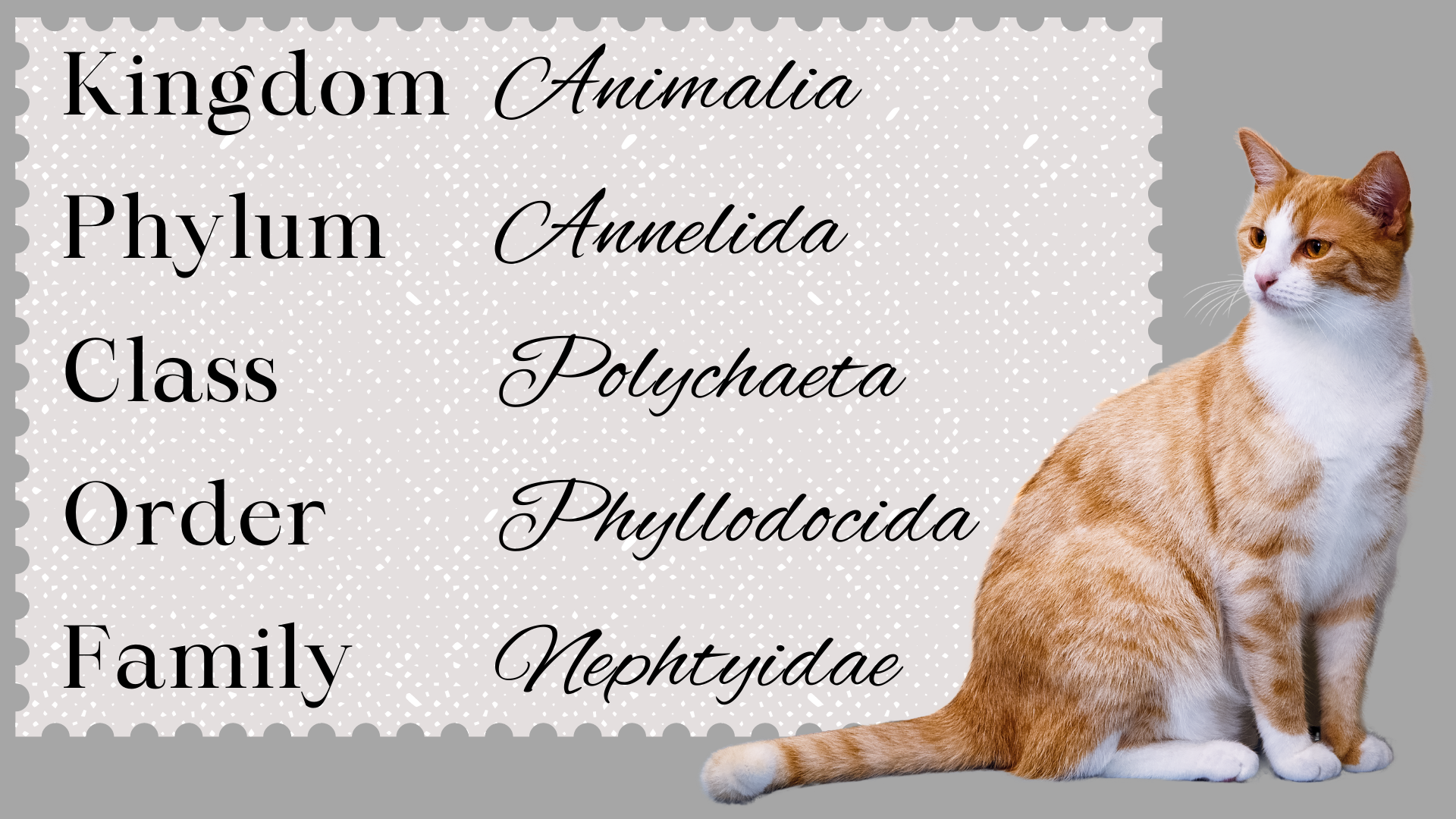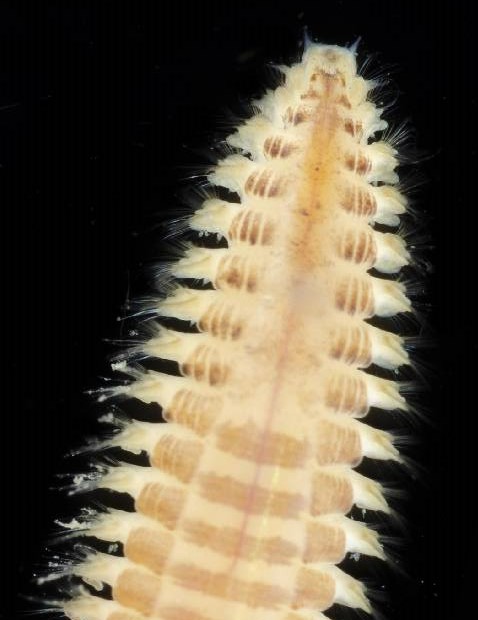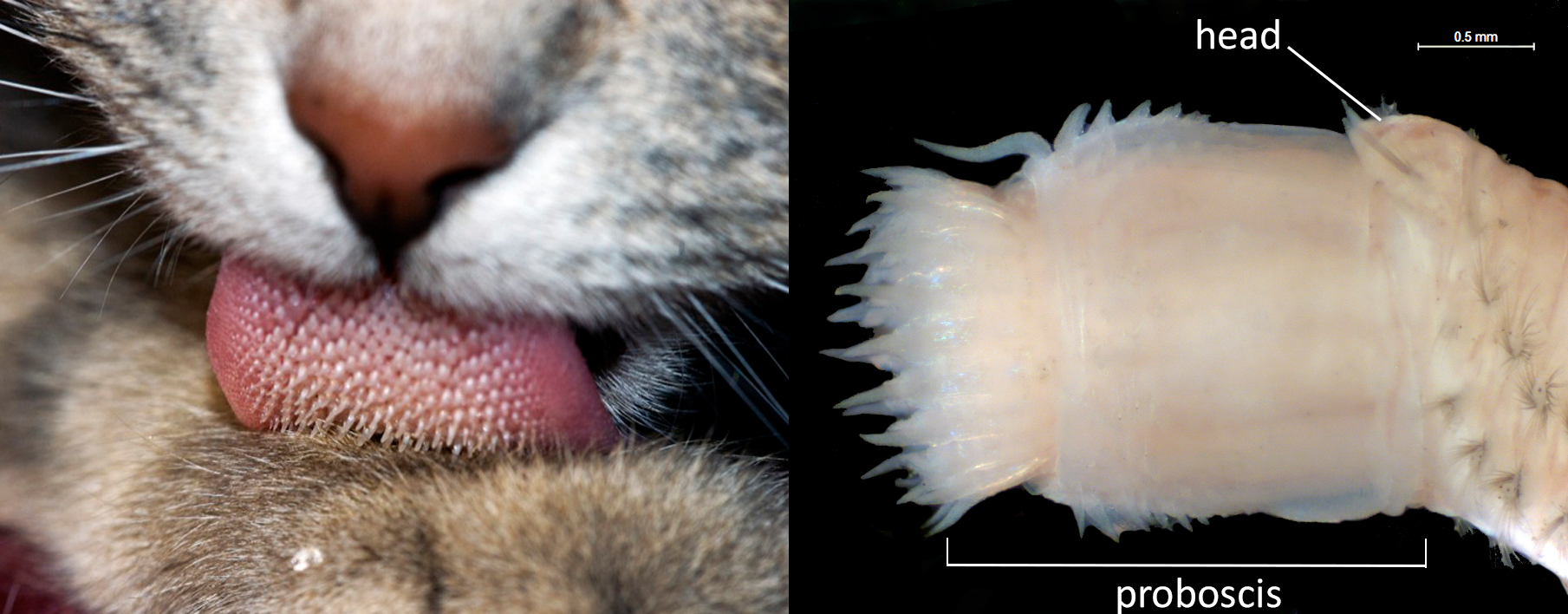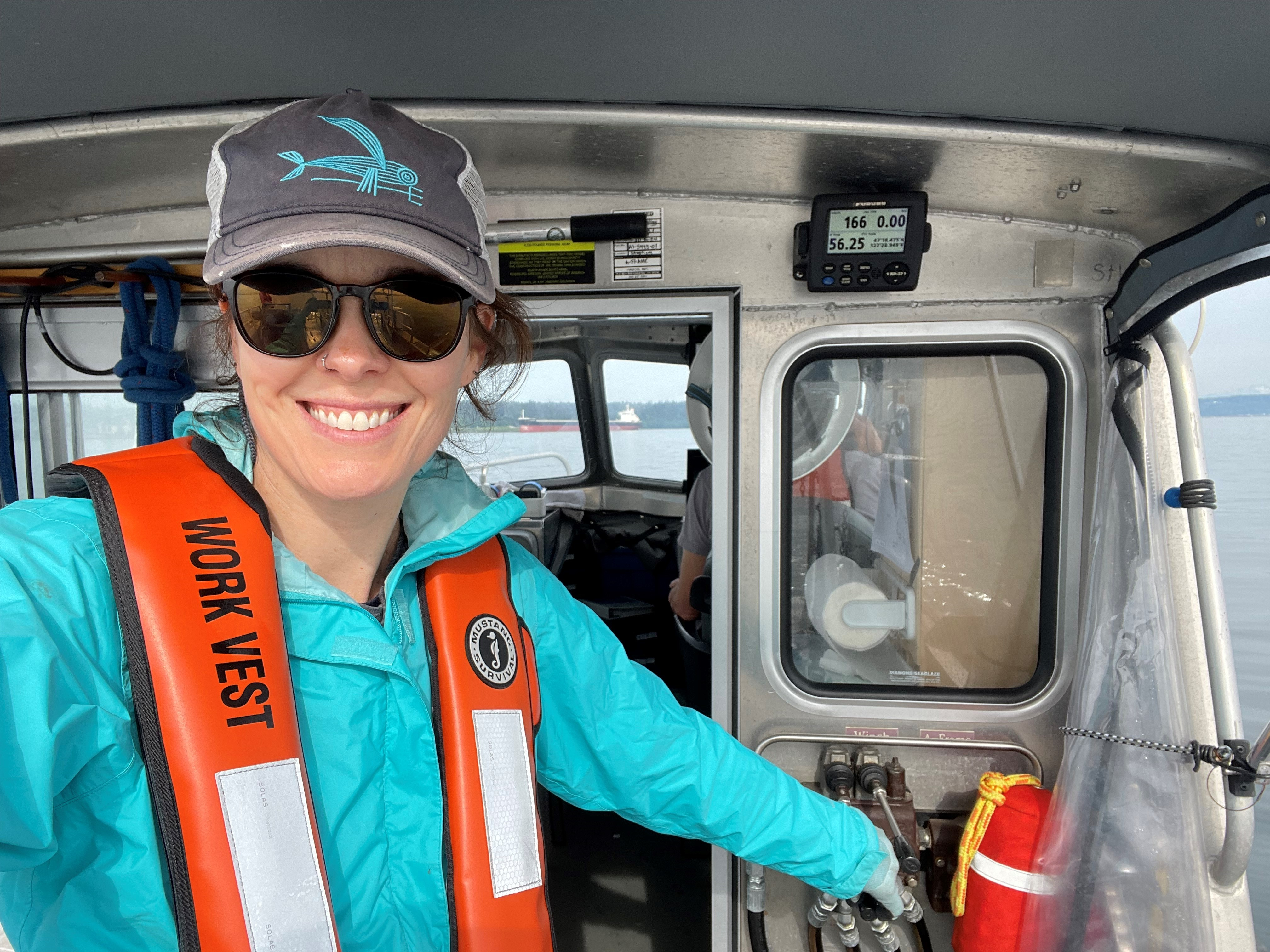A catworm, Nephtys ferruginea, from North Hood Canal, Puget Sound. Photo by Gustav Paulay, FLMNH.
Copy cat
With their square heads and antennae that look a bit like pointy ears, it makes sense why the catworms, or marine segmented worms in the family Nephtyidae, would be named after cats. But their antennae are more like a cat’s sensory whiskers than ears, allowing them to feel their way through the mud as they crawl and burrow. Nephtyids are strong diggers, and can even hold their own in the water, rapidly wiggling their smooth, pale bodies in order to swim. I do NOT recommend trying this at home with your kitty.
You’ve got to be kitten me!
Anterior end of N. ferruginea. Photo by Gustav Paulay, FLMNH.
A few species of catworms call the subtidal sediments of Puget Sound home. Most can be distinguished by taking a microscopic look at their “paws” — what we taxonomists call parapodia, or worm feet. But the most common species, Nephtys ferruginea, is easily identified by the striped “tabby” pattern on its segments. N. ferruginea is relatively small, but its cousin Nephtys assignis reaches as long as 18 cm (7 inches). Now that’s a “megachonker” on the Chonk Chart!
Cat and mouse
Similar to terrestrial cats, catworms are a top carnivore in their benthic world, actively churning through the mud as they hunt for small clams and other worms. No time for cat naps here! They have a muscular feeding appendage called a proboscis that is eversible, meaning it can turn inside out and shoot out of their mouths. Once prey are gripped in their powerful jaws, they pull the proboscis — and the meal — back in.
Cat got your tongue
A catworm’s proboscis is covered with rows of pointed, sensory papillae that you might recognize if you have ever Googled close-ups of a cat’s tongue. (If you were blissfully ignorant on this topic, I’m sorry. You may never let your cat lick you again). The catworm’s sensory papillae are much softer than a cat’s hooked ones… but still no licks, please.
Left: Close-up of a cat’s tongue; photo by Jennifer Leigh, CC-BY-SA 2.0. Right: Side view of Nephtys ferruginea with the proboscis fully extended.
Nine lives
Compared to the one-to-two-year life span of most marine worms, a catworm’s life is impressively long. One study in the UK found that the catworm Nephtys caeca, which occurs here in Puget Sound, can prowl the mud for about seven years (if it doesn’t let curiosity… well… you know.) At two years of age, it starts laying down growth rings on its teeth (similar to tree rings) that can be reliably used to age individual worms.
Admittedly, I am not a cat person, but even I have to concede that catworms are the coolest cats in Puget Sound’s benthic community. At least until someone discovers the dogworms…
Critter of the Month
Dany is a benthic taxonomist, a scientist who identifies and counts the sediment-dwelling organisms in our samples as part of our Marine Sediment Monitoring Program. We track the numbers and types of species we see to detect changes over time and understand the health of Puget Sound.
Dany shares her discoveries by bringing us a benthic Critter of the Month. These posts will give you a peek into the life of Puget Sound’s least-known inhabitants. We’ll share details on identification, habitat, life history, and the role each critter plays in the sediment community. Can't get enough benthos? See photos from our Eyes Under Puget Sound collection on Flickr.






